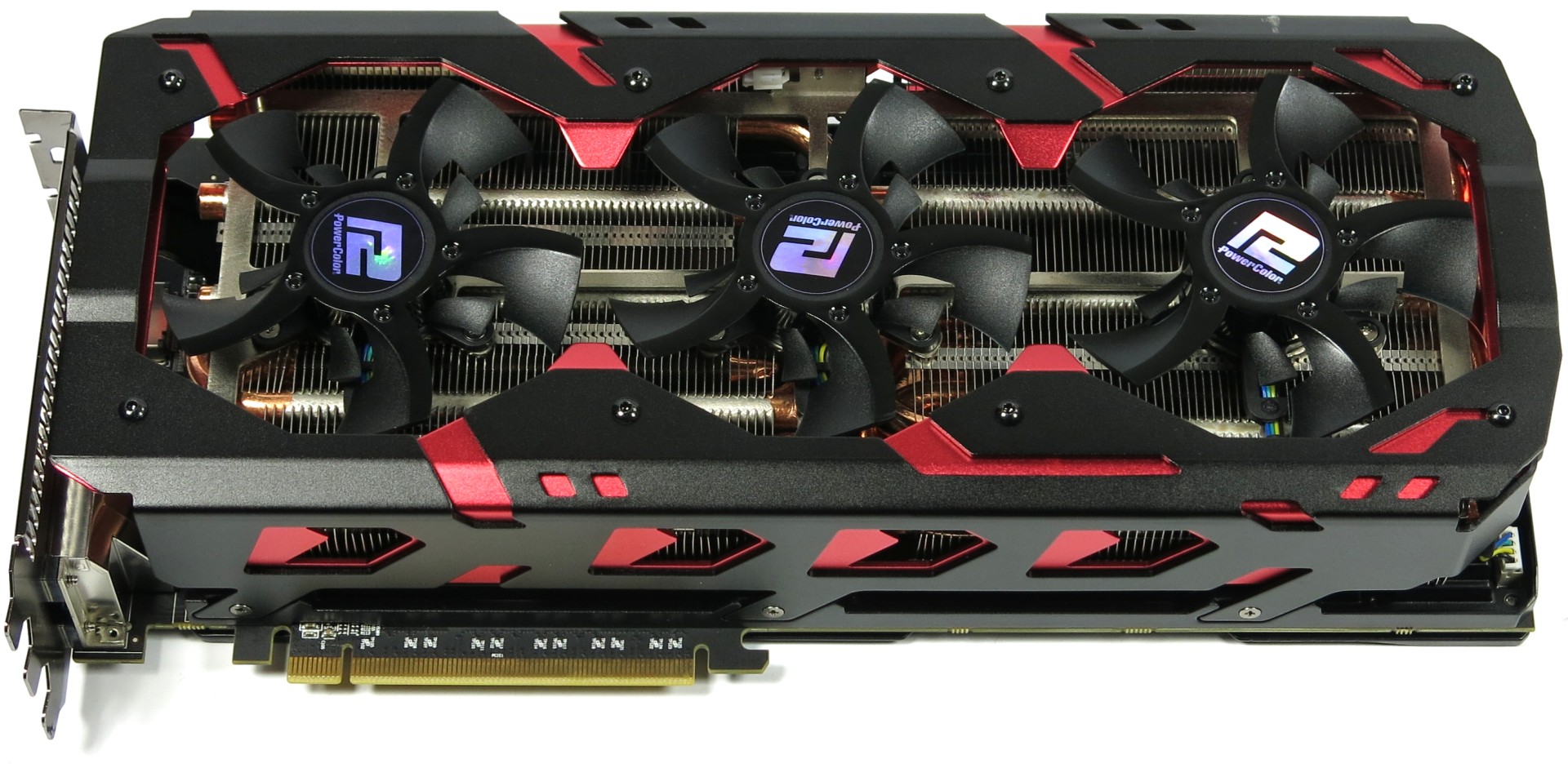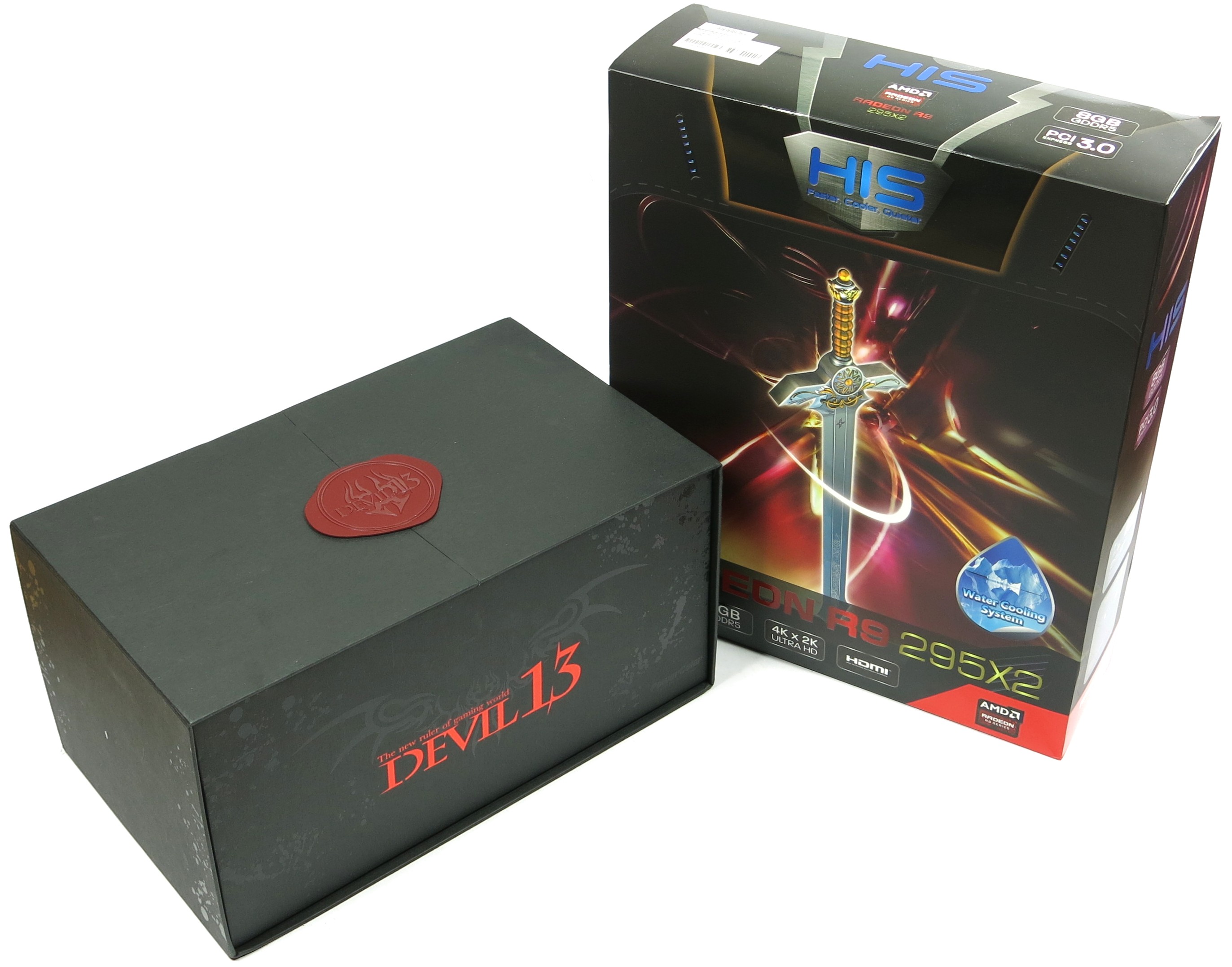PowerColor Devil 13 Dual Core R9 290X 8 GB Review: Dual Hawaii on Air
PowerColor’s Devil 13 graphics card, with its two Hawaii GPUs and massive heat sink, weighs in at more than two kilograms and exudes luxury. But can it compete with AMD’s dual-GPU reference design with closed-loop water cooling? Let’s find out!
PowerColor Devil 13 Dual Core R9 290X: An Interesting Tech Demo
PowerColor proves to us that it's possible to put two Hawaii GPUs on one board, run them without a dramatic reduction in clock rate, and cool them with heat sinks and fans.
The Devil 13 Dual Core's power circuitry stays under 70 degrees Celsius as well, which isn’t bad. As opposed to AMD’s reference Radeon R9 295X2, PowerColor's creation is also free from any extreme peaks in power consumption, even under full load. This suggests that, even though the card's power supply is different, it's implemented well and ideal for handling the quick load fluctuations experienced by high-end GPUs. Smoothing out those spikes takes stress off of the power supply, which is already taxed by such high-end hardware. That's actually an important point, since graphics card vendors increasingly don't temper those big spikes. Instead, they make them the responsibility of PSU manufacturers.
There's also a lot to like about the Devil 13's accessory package, which includes a Razer Ouroboros wireless gaming mouse and the PowerJack, designed to hold up and support this massive graphics card. For a presumably limited time, Newegg is also throwing in a 120 GB Samsung 840 EVO SSD worth $100.
Unfortunately, the Devil 13 Dual Core R9 290X is not quiet. Registering more than 58 dB(A) in quiet mode and more than 61 dB(A) in performance mode, this graphics card is a conversation piece only in the sense that it doesn’t allow conversations to happen anywhere near it. No doubt, this is the same challenge Nvidia faced with its GeForce GTX Titan Z. Ultimately, that company had to turn performance down through lower core clock rates in order to make the board's acoustics acceptable.
High power consumption at idle, which tops 35 W in spite of one of the GPUs being turned off, suggests that board layout wasn't a priority when the Devil 13 was designed.
Bottom Line
PowerColor's Devil 13 Dual Core R9 290X is a limited-edition graphics cards that will find a following, despite all of the reasons to avoid it. It's really not fit for everyday use, partly because of its price, and mostly due to its noise level.
For the same $1500 you'd spend on AMD's surprisingly elegant Radeon R9 295X2, you get that improved power delivery. But then you're forced to contend with the heat of two Hawaii processors dumped in your chassis by fast-spinning fans. Sure, there's a pretty sweet mouse bundled as an extra value. However, in the context of high-end graphics, the closed-loop liquid cooler on AMD's dual-slot 295X2 is more sensible.
Get Tom's Hardware's best news and in-depth reviews, straight to your inbox.
Still, PowerColor's innovation deserves mention. The company managed to do something different. It runs two of AMD's fastest graphics processor at full speed on air cooling without throttling back GPU frequencies.
In the end, the Devil 13 Dual Core R9 290X is mostly a technology demonstration, we'd say. It shows that two Hawaiis can be cooled by air and that they'll run without overwhelming a built-up thermal solution. But that's really all it works for. PowerColor earns recognition for going out on a limb, even though liquid cooling would have been the quieter way to cool this monster. Then again, there's already a long list of partners doing that.
Current page: PowerColor Devil 13 Dual Core R9 290X: An Interesting Tech Demo
Prev Page Results: 2160p With Optimized Settings
Igor Wallossek wrote a wide variety of hardware articles for Tom's Hardware, with a strong focus on technical analysis and in-depth reviews. His contributions have spanned a broad spectrum of PC components, including GPUs, CPUs, workstations, and PC builds. His insightful articles provide readers with detailed knowledge to make informed decisions in the ever-evolving tech landscape
-
jlwtech Was this card staying at 1000Mhz during those benchmark runs?Reply
The FPS difference at 1080p is ~7%, yet the clock difference is less than 2%.
Also,
Did you find the Devils maximum stable overclock? With all that power available, I'd imagine this thing could achieve better overclocks than the 295x2.
-
FormatC OC makes no sense, because the card will be really loud. And please read the review attentively! The performance difference between both cards reflects the difference in power consumption nearly 1:1! To handle this cooling by air, the power color card uses a lower power target. Since AMDs Power Tune and Nvidias Boost the pure core clock rates says nothing about the final performance! In my eyes this is also a good study about the limits of an air-cooler.Reply
Take a look at the page with the HiRes power draw. This card isn't a perpetuum mobile. Less power consumption = less gaming performance. OC brings really nothing. Ok, you can destroy your ears... (or the card). We had to handle this rare card very carefully, so I was not able to break the voltage barrier. -
jlwtech Reply13766047 said:OC makes no sense, because the card will be really loud. And please read the review carefully! The performance difference between both cards reflects the difference in power consumption! To handle this cooling by air, the power color card uses a lower power target. Since Power Tune and Boost the pure core clock says nothing abou the final performance!
Take a look at the page with the HiRes power draw. This card isn't a perpetuum mobile. Less power consumption = less gaming performance. OC brings really nothing. Ok, you can destroy your ears...
"Destroy my ears"?
"OC makes no sense because the card will be really loud"? Are you serious??????
Since when has that stopped anyone?
This thing is quiet compared to high end cards from 5+ years ago....
Have we become so spoiled by the advances in technology, that has enabled higher performance at lower noise levels, that we will not push the limits in fear of a little noise!?
It's an ultra high end GFX card made for the kind of people who like to push the limits. It should absolutely be overclocked and benchmarked. With a big fat mind-blowing power usage chart with figures higher than any card has ever pushed!
Also, clock rates still directly correlate to performance. Lowering the power tune limit will limit clock rates, and vice versa. Lower clock rates equals lower performance, but lower power does not always equal lower performance.
-
jlwtech I just got done reading 3 other reviews for this card, and each of those reviews had this card slightly above the 295x2 in their gaming benchmarks. (despite the Devil's boost clock being slightly lower).Reply
That seems a little odd.
The games, game settings, drivers, average clock rates, and Bios mode used for the benchmark figures/comparison, are not listed in this review. (unusual for Toms) That information would be very helpful.
I suspect that the 295x2 was maintaining a higher average clock rate, in this comparison. (higher than 2%, anyways)
PowerColor, almost certainly made sure that this card meets-or-beats the performance of the 295x2, before sending it off for review.
-
Menigmand It's interesting to see this kind of enormous, powerful, noisy card being developed in a market where most games are designed to fit the limits of console hardware.Reply -
mapesdhs Why have they called this a 290X? Rather confusing, it should be called a 295X.Reply
Having it listed in the 290X section on seller sites is dumb. Also, it's not an 8GB
card, it's a 2x4GB card. I really wish tech sites would stop GPU vendors from
getting away with this inaccurate product spec PR. Call it for what it is, 2x4GB,
and if vendors don't like it, say tough cookies. The user will never see '8GB' so
the phrase should not be used as if they could (though PowerColor seems happy
to have such misleading info on its product page). I'm assuming you agree with this
Igor, because the table on pp. 11 does refer to the Devil 13 as a 2x4GB... ;)
Btw, checking a typical seller site here (UK), the cheapest 290X is 1040MHz core,
so given the Devil 13 uses 3 slots anyway, IMO two factory oc'd 290Xs make more
sense, and would save more than 300 UKP.
Ian.
PS. The typo Mac266 mentioned is still present.
-
jlwtech Why did the person who wrote this article focus primarily on power consumption and efficiency?Reply
This review has 4 pages of power consumption/efficiency data, with some impressively detailed information. But, it only has 2 pages of actual performance data, with almost no details at all.
Who wouldn't want to see this card overclocked to a ridiculous extent, with plumes of smoke coming off of it, and the only power consumption figures showing that it's consuming more power than any other card ever made?
(I had to edit this comment. That first revision was a little crazy.)
-
bemused_fred Reply13766675 said:The primary focus of this review is absurd!
Why did the person who wrote this article focus primarily on power consumption and efficiency?
This review has 4 pages of power consumption/efficiency data, with some impressively detailed information. But, it only has 2 pages of actual performance data, with almost no details at all.
The performance is so close to the performance of the liquid-cooled R9-295X that it would basically be a repeat of that review. If you want an idea of its performance, just re-read that review and maybe reduce each frame rate by 3%-ish.
OT: 60Db? Into the trash it goes. I don't care how expensive a card is, if it's too loud that I can't have a goddamn normal conversation near my computer, it's going in the skip. I don't want to surround myself in an anti-social bubble of noise-induced hearing loss every time I want to game.

